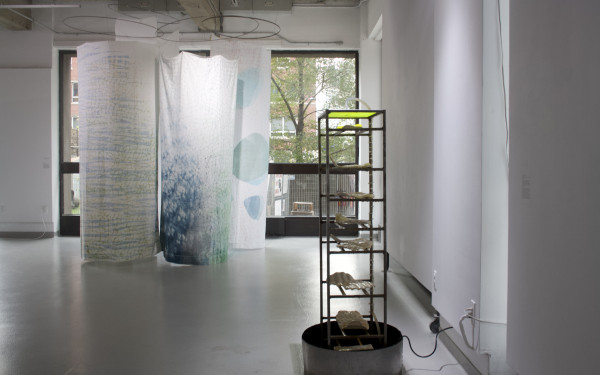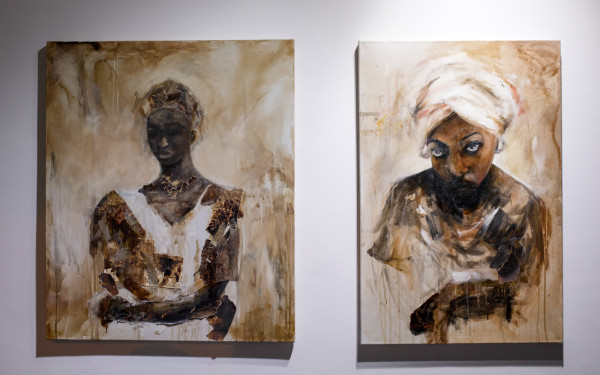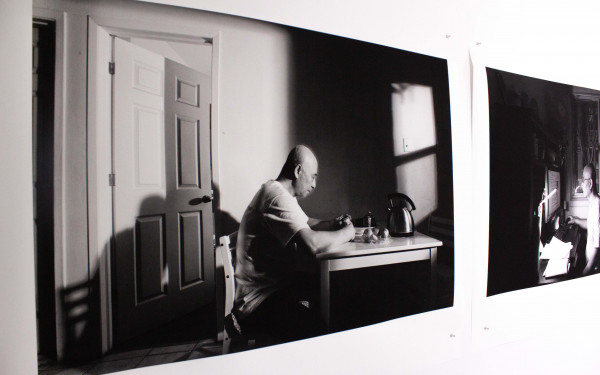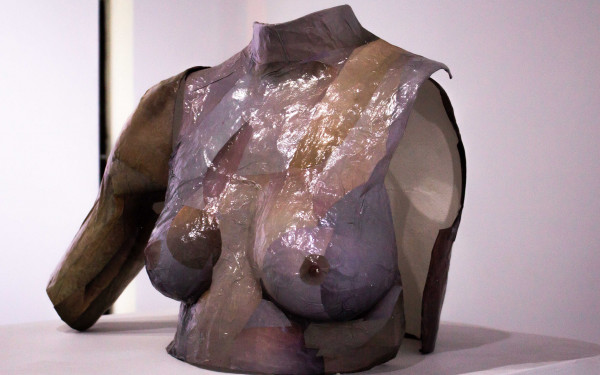VAV Gallery Eases Into the Fall With ‘It’s Always Better to Wear a Mask’
Capitalism, Pop Culture, and Human Connection Are Sprinkled With a Light Sense of Humour
“Reach out and wade into the hazy, indeterminate past. Imagine your partner’s first memory.”
This is what reads one of Leah Watts’ cards from her interactive installation piece, A Blossom That Never Leaves You, with a purpose to create an interaction between two people.
In the student-run Visual Arts Visuels Gallery lied three podiums, each holding a number of see-through cards created out of acrylic glass. On each one of them, Watts has printed a suggestion, an imaginary movement that invites intimacy in a poetic expansion of imagination.
This is how it works. Both players pick up a number of cards from the deck, then take the same number of steps away from each other as there are cards in their hands. Silently, players read the cards to themselves. Following Watts’ poetic suggestions, the game invites you to imagine yourself carrying out certain actions to your partner.
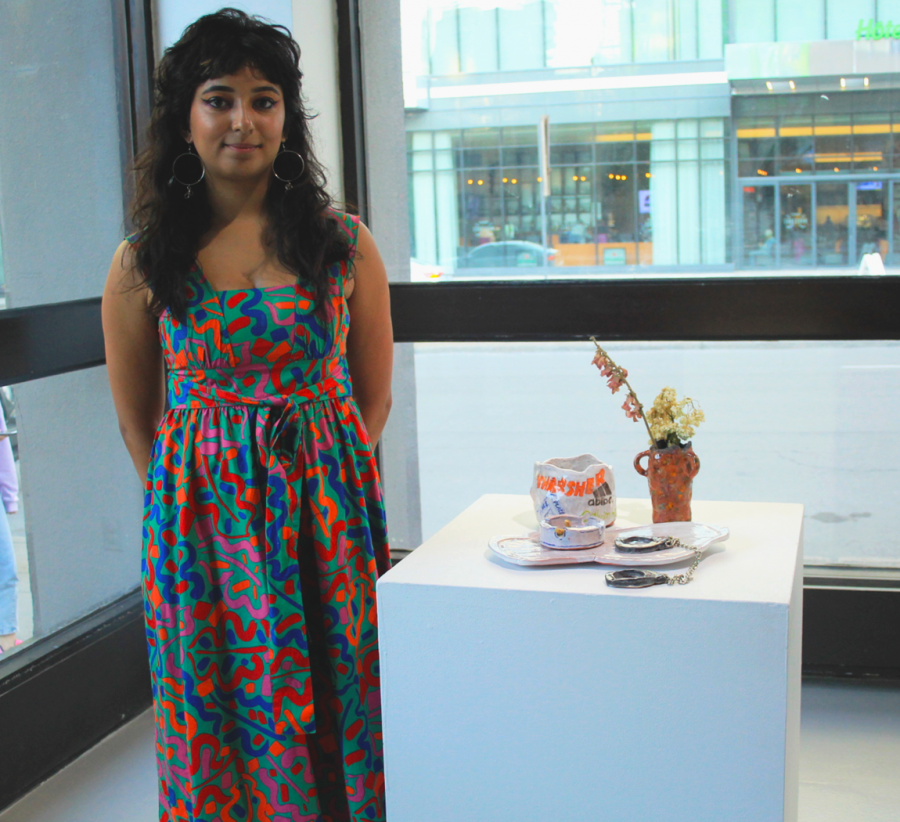
As players move through the cards in their hands, they step towards each other. The game ends when all the cards in the players’ hands have been read, and the two players are left standing face to face.
“I think there is a bit of discomfort,” said Watts. “Why is being close to someone uncomfortable, or even imagining that you’re close to someone uncomfortable? But ultimately, moving past that discomfort and discovering what is hidden underneath, to sort of see the connections.”
It was a Thursday night at the VAV, the undergraduate art gallery nestled on René-Lévesque Blvd. W. in the VA Building. Inside, drinks were being poured, and upbeat techno beats filled the space with an enigmatic, bouncing energy that matches the art sprawled across the walls and around the room.
The first vernissage of the fall 2019 semester, it’s always better to wear a mask displayed the works of seven undergraduate students. Inviting “themes of masculinity, capitalism, internet culture and human connection,” according to the blurb, the exhibition ran between Aug. 24 and Sept. 14.
“In this exhibition, we’re dealing with a lot of thematics of pop culture, things that are more playful and fun,” said Alexia McKindsey, the gallery’s financial and administrative coordinator.
“There are a lot of works that feature more comedic value.”
“There’s a lot of misogyny behind people who are denying environmental facts.” — Trevor Bourke
Through paintings, ceramics, video installations, and an immersive imagination game, the space tells a narrative of society through individual perspectives.
Six of Trevor Bourke’s self-labeled “capitalist-realist” paintings line the northern wall of the gallery. Conceptual oil and acrylic paintings that revel in bright colour palettes, Bourke’s paintings are exciting and appealing to the eye.
His works are multi-dimensional and layered, glimpses into an abstract world, shaped by an explosion of colours and shapes, all blended with a hearty dose of humour, reminding the audience not to take themselves too seriously.
The Lament of Anu, an oil painting in green, blends three images on the canvas. A green woman channeling the forest is at the forefront. An anguished face painted in white is at the bottom left corner. And, at the top left hand corner, a scene “loosely based on a wood carving of a saint […] performing a cesarean on a woman” is shown.
The painting is about his “understanding of the footfalls of environmental science, and how there’s a lot of misogyny behind people who are denying environmental facts.”
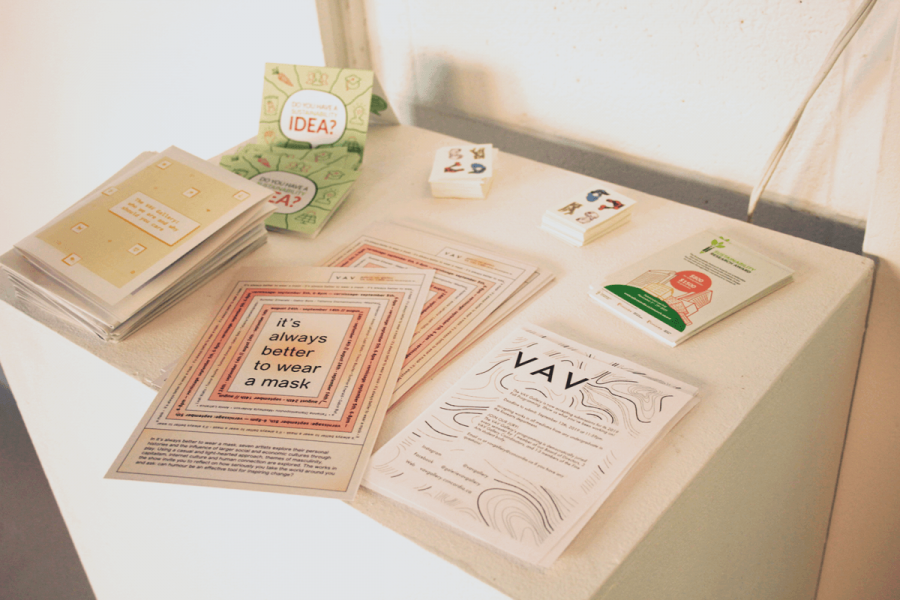
“I don’t know how to write that, or how to research that, but I knew how to paint it,” Bourke explained. He referred to his paintings as “little research projects.” He uses the artform to explore and express his ideas and understanding of social, environmental, and political concepts.
Machination is another explosion of inspiration, curious and entertaining. The painting slivers off into another dimension, pops of colour anchoring the audience’s attention with an invigorating energy.
In the background, black line drawings contrast against a three-dimensional graffiti-like shape. A man’s face, dripping in green in the upper right hand corner, sits next to an oval window of lemons.
“[The paintings are] this conversation that I am trying to flesh out between [a] confrontation of late capitalism, trying to put images to these emotions of depression, separation, loss, and a little bit of humour,” explained Bourke.
“Because all these things are kind of funny, at a weird twisted level.”
“I try to keep it a little bit light,” he added with a smile.
Masheyla Anderson’s Self Portrait on a Sunday is a calm respite, a piece that reveals its narrative upon further inspection. A terracotta glaze sculpture decorated with chain and dried flower, the piece is an exploration of Anderson’s life as a “newly single person.”
RelatedUnhooking herself from a string of bad relationships, the ceramic piece explores the unhinged world of Tinder, fuckboys, and fake people in humble self-reflection.
Placed on a podium and set in the daylight by a window is the ceramic tray, decorated with real Tinder messages that Anderson has received. The messages are ceramic details that were burned into the glaze when put into the kiln.
An ashtray and a flower pot, holding two single strands of dried flower, keep the theme of a quiet Sunday morning intact. Yet, vulnerability permeates, an exposed glance into the artist’s inner narrative.
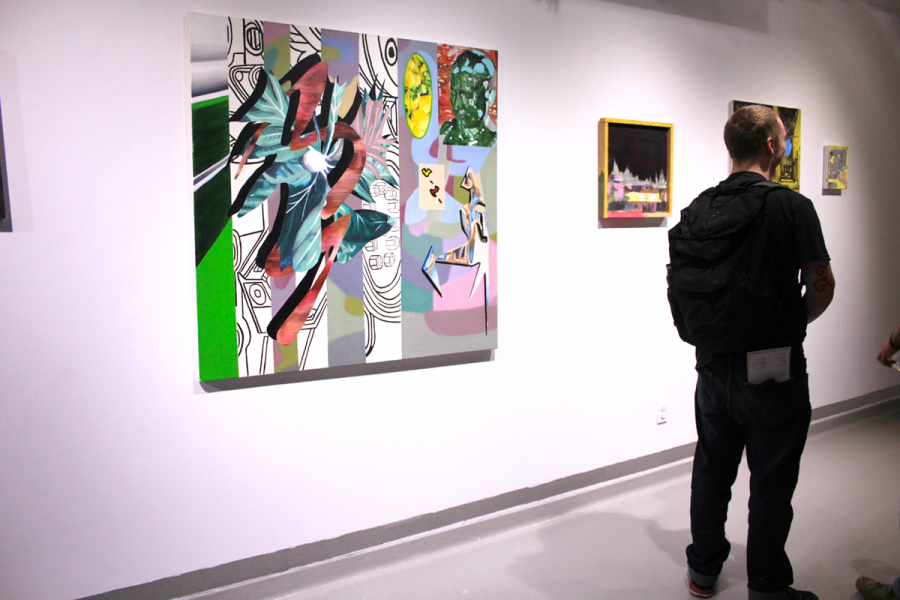
Anderson created the piece in a ceramics class last year. Prompted to create a still life of her choice, Anderson decided to introspect—she wanted to “create something that was a reflection of [her]self.”
“I really felt like I was really vulnerable in this piece, and I wanted to display this vulnerability,” she explained. “I think it’s kind of like closure for me too, and moving forward with my thoughts.”
This is not only Anderson’s first piece exhibited in a gallery, but a big step out of her comfort zone. As a design student, Anderson usually creates works that are more impersonal.
Dipping into the realm of ceramics provided an opportunity of growth for the artist, who usually paints and draws as a form of creative expression.
Further into the gallery, Tatianna Diamantopoulou’s short film GRWM, 2019 jumps right into the world of pop culture and beauty standards, glazed with the stirrings of sexual awakening.
RelatedStylized as a Bob-Ross-Meets-Youtube-Get-Ready-With-Me video, Diamantopoulou sees the piece as more of a documentation of a performance.
In the video, Diamantopoulou stands against a saturated yellow background and applies a penis-shaped lipstick to her lips.
“We grew up with this, like, ‘you can do anything’ thing, and it has created a general generational anxiety that we can do anything,” explained Diamantopoulou. “But we’re still fighting for our sexualities. And we can’t really do [that], especially for my experience.”
The world is changing, and society better catch up. Exploring taboo themes of sexuality is pertinent to Diamantopoulou, who explores the misogyny of sexual taboo often in her work.
Through this piece, Diamantopoulou is coming into her own, and sharing it with the world. “You can accept your own sexuality and go live it,” she said.
The VAV Gallery runs year round, offering undergraduate fine arts students a chance to showcase their work periodically throughout all semesters. Check out the VAV’s website for more information on how to apply to the gallery’s next show.

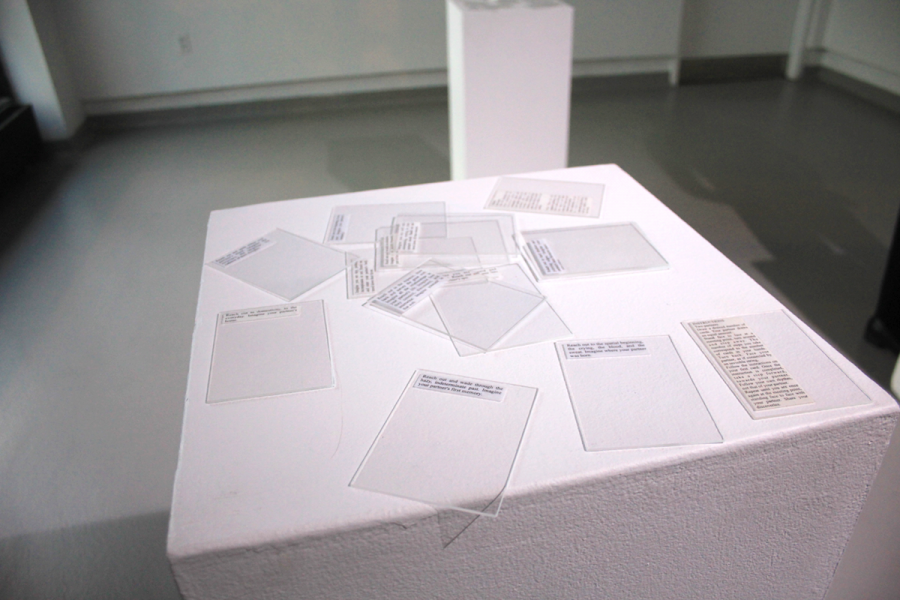
_600_832_s.png)

